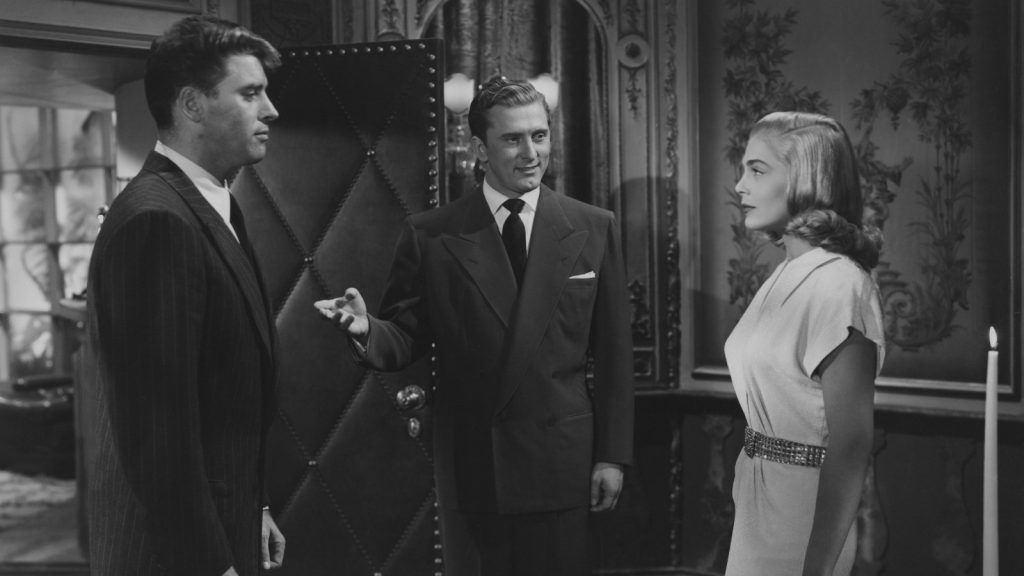Byron Haskin’s third directorial effort, I Walk Alone (1948), is significant for a number of reasons. It was the first time the director would team with leading man Burt Lancaster (the second film these two would do together being 1954’s His Majesty O’Keefe), and the first time Lancaster would be cast alongside Kirk Douglas (one of classic Hollywood’s most infamous pairings). The third major reason for this film’s lasting importance is its innovative treatment of the crime film genre.
Considered by many to be an early film noir, I Walk Alone is a little more cautious of bathing shadows, preferring a model similar to the Warner gangster films of the previous decade. However, Haskin isn’t so concerned with Warner’s themes of vengeance or violence, but rather the shortcomings of these sociological occurrences and the ramifications they have for the characters in the narrative. Films like The Killers (Burt Lancaster’s debut in 1947) stress violence as a way of life, and vengeance as a common commodity in the universe of the crime film. I Walk Alone demonstrates throughout the ineffectiveness of violence, with simple wit being the component that finally allows its protagonist to succeed in obtaining his goals.

The film follows Frankie (Lancaster), beginning with his release from prison. Free as a bird, he seeks out his old partner in crime, and now prestigious nightclub owner, Dink (Douglas). Along the way, Frankie finds an ally in Dink’s mistress and nightclub singer Kay (Lizabeth Scott). But Dink loves his business first, double-crossing the pair. Frankie, an old school tough of prohibition days, seeks revenge and fails, twice. Dink, realizing Frankie won’t just go away, frames his old partner for murder. With Kay’s help, and a couple of clever tricks, Frankie sets everything right, bringing Dink to justice. Dink, however, breaks free of the police, only to be gunned down just as he’s about to dispatch Frankie.
The narrative of I Walk Alone isn’t exactly strikingly original, but the interpretation of the characters and their morality by both the actors and the director set this film above par. From the very start of the film, the audiences’ sympathies are with Frankie. He’s unlovable, crude, stupid and violent. But Lancaster plays his brute with an awkward naïveté (a trait Lancaster was able to imbue a number of his early roles with). Frankie is out of place, and out dated against his opponent Dink. It’s his behavior; the confusion Lancaster articulates whenever Frankie’s acts of violence fail to threaten or intimidate that makes him sympathetic. The audience knows that confusion. The anxiety of returning to a life left behind or lost, especially the audience that would have seen I Walk Alone during its first theatrical release just three years after WWII. It’s rare that a film noir or any crime film takes this approach in analyzing its protagonist. The popular convention of the time was for larger than life criminals or smart-ass small time hoods as the protagonists. Haskin avoids all of these conventions with Lancaster’s portrayal of Frankie.
